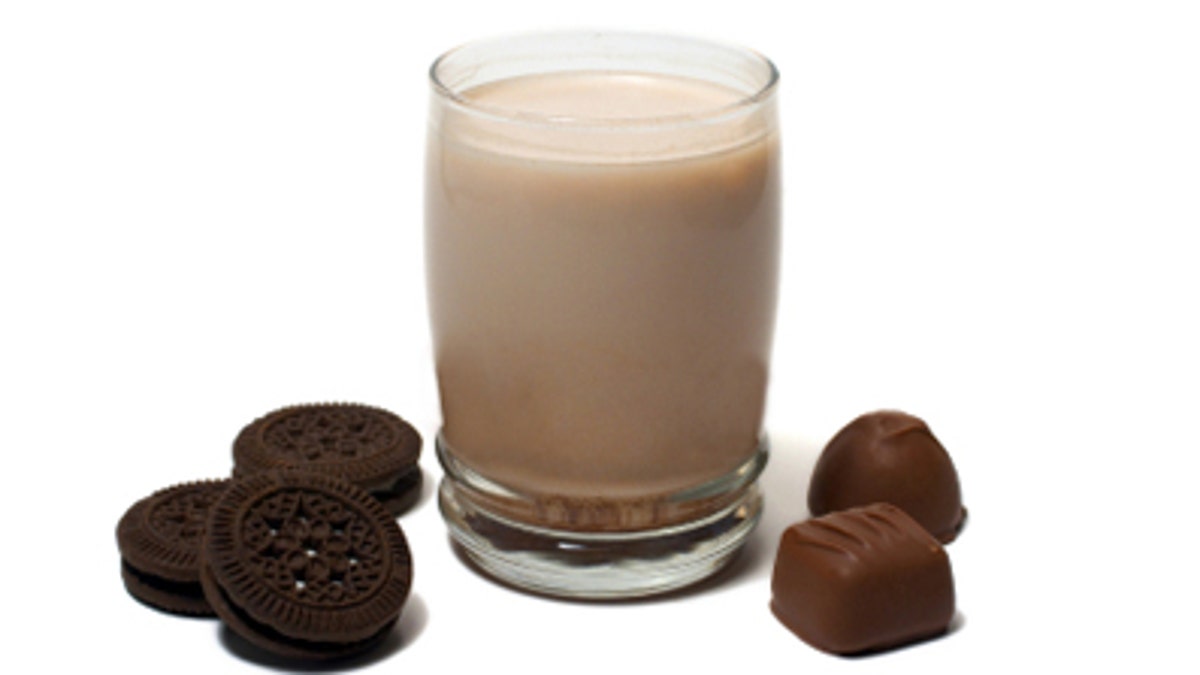
(Unspecified)
To get the best results from your training, ensure that your post-workout drink or meal is up to par. After your workout, your body is most receptive to using amino acids to repair muscle tissue, while using carbohydrates to restore muscle glycogen.
MORE FROM ASK MEN:
What To Eat & Drink Before & After Workouts
Low-Cost Weight-Gain Shake Recipes
One of the best post-workout options is chocolate milk. Most prepared chocolate milk beverages are made with 1 percent or 2 percent milk, but you could also create your own fat-free chocolate milk by adding some chocolate syrup to regular skim milk. This will provide you with the benefits of carbohydrates, while giving you the optimal protein source found in milk.
Do make note, though, that different brands will vary in total calorie content, so even across the 1 percent varieties, the fat content may be the same, but total calorie content (typically ranging from 90 to 200 per 250 ml) will differ.
Here’s why post-workout chocolate milk tops the list when it comes to fueling yourself after a hard session at the gym.
Protein Content
Post-workout chocolate milk is beneficial because of its protein content. Every cup contains between eight and 11 grams of protein, with the Clover and Bravo Foods brands containing the most. Ideally, you’ll want to consume between 15 and 25 grams of protein after a workout, which equates to 500 to 750 ml of chocolate milk.
Also, a study in the American Journal of Clinical Nutrition found that, when taken immediately after exercise, milk-based proteins promote greater muscle protein synthesis than soy-based proteins.
Finally, another reason why post-workout chocolate milk is beneficial is because cow’s milk contains about 80 percent casein protein content and 20 percent whey protein content. This is ideal because the whey protein is fast-acting, allowing amino acids to get right into the muscle tissue, while the casein protein is digested slower, providing a steady stream of amino acids over a lengthier period of time.
Carbohydrate Content
Turning to post-workout chocolate milk immediately following your lifting sessions is a smart move because of the types of carbohydrates it provides. The total carbohydrate count will vary depending upon the brand you choose, with most coming in around 20 to 25 grams of carbohydrates. The highest carb count is found in Hershey’s 2 percent Chocolate Milk, which rings in at 31 grams, while Hood’s Calorie Countdown 2 percent Chocolate Milk has the lowest carb count (5 grams).
This sugar will cause a spike in insulin levels, driving the glucose molecules into the muscle tissue and replenishing the energy stores for your next workout. Without this insulin spike, you’re going to be looking at a slower recovery period, which could mean more time out of the gym.
A study by the International Journal of Sports Nutrition had subjects perform three interval-style, exhaustion workout sessions on separate days, and then monitored the recovery that was demonstrated. The subjects consumed either chocolate milk or a carbohydrate replacement fluid post-workout.
Chocolate Milk
It was seen that after the recovery period was over, those who were drinking post-workout chocolate milk showed enhanced performance between the interval sessions, indicating that the carbohydrates in chocolate milk were doing a better job in recovery than the carbohydrates in the replacement beverage.
Calcium Content
Finally, drinking post-workout chocolate milk is a smart move because of its calcium content. Calcium is one of the minerals that plays a critical role in the “power stroke” – when the individual muscle fibers generate tension through a cross-bridge cycling pattern, causing contraction to take place. The calcium ions are what bind to the plasma membrane and send one of the first signals to stimulate the power stroke. So, without enough calcium ions in the body, this process will not take place optimally.
By drinking post-workout chocolate milk you will increase your daily calcium intake, and increase the likelihood of an optimal power stroke. Most brands average between 300 and 400 mg of calcium, but if you opt for Hershey’s Chocolate Milk, you’ll get 500 mg per cup.
Milk it
Chocolate milk has a bad rep for being full of sugar, but perception is quickly changing and people are turning to it after their workout sessions. So, there’s no need to spend tons of money on mixing up some fancy post-workout beverage – consider using simple chocolate milk instead.
